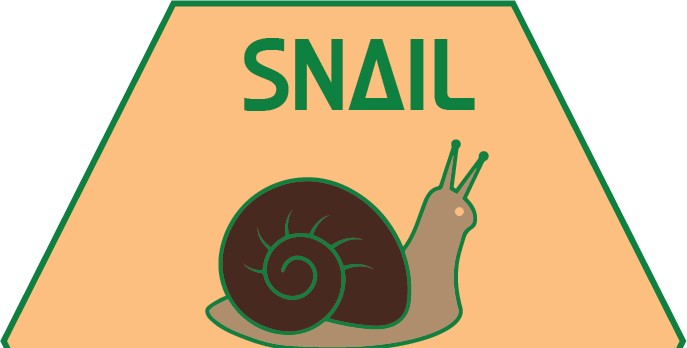
Introduction
Snail farming, also known as heliciculture, is rapidly emerging as a lucrative agribusiness with immense potential for small and medium scale entrepreneurs. Beyond the delicious and nutritious snail meat, there is another treasure hidden within these creatures: their blue blood, scientifically known as haemolymph. This fluid is not only fascinating but also incredibly valuable in the biomedical industry. In this article, we delve into the world of snail farming with a focus on blue blood (haemolymph) harvesting, exploring its medical applications and market potential. This information is invaluable for aspiring Agripreneurs.
Why Snail Farming?
Low Start-Up Costs and High Returns
Snail farming requires minimal initial investment compared to other forms of livestock farming. It is a low-risk venture with high potential returns. Snails reproduce rapidly, and their farming is not labor-intensive, making it an ideal business for small and medium scale entrepreneurs.
Sustainable and Eco-Friendly
Snails have a low environmental impact. They require little space, can be fed kitchen scraps, and their farming does not produce harmful waste. This makes snail farming a sustainable and eco-friendly agribusiness.
High Demand for Snail Meat
Snail meat is a gourmet delicacy enjoyed in various cuisines around the world. It is high in protein, low in fat, and rich in essential amino acids. In Africa, countries like Nigeria and Ghana have a strong market for snail meat, both locally and internationally.
The Hidden Treasure: Blue Blood Haemolymph
What is Haemolymph?
Haemolymph is the circulatory fluid found in invertebrates like snails. Unlike human blood, which uses iron to transport oxygen, haemolymph uses copper, giving it a distinctive blue color. This copper-based molecule is called haemocyanin.
Why is Haemolymph Valuable?
Haemolymph has unique properties that make it highly valuable in medical research and pharmaceutical applications:
- Antimicrobial Properties: Haemocyanin has strong antimicrobial effects, making it useful in developing treatments for infections and wound care products.
- Immune System Modulation: Haemolymph can modulate the immune response, beneficial in creating anti-inflammatory drugs and treatments for auto-immune diseases.
- Oxygen Transport: The efficient oxygen transport capabilities of haemocyanin are of interest in creating blood substitutes and enhancing wound healing.
Medical Applications of Haemolymph
- Wound Dressings
Haemolymph’s antimicrobial properties are being harnessed to develop advanced wound dressings. These dressings can help prevent infections, speed up healing, and reduce the need for antibiotics. In South Africa, research is underway to integrate haemolymph into bioactive wound dressings, providing a natural and effective solution for chronic wounds.
- Biosensors
The unique chemical properties of haemocyanin make it an excellent candidate for biosensors. These devices can detect various biological markers, making them useful in medical diagnostics. For example, haemolymph-based biosensors can be used to monitor glucose levels in diabetic patients or detect pathogens in biological samples.
- Anti-inflammatory and Immune-Boosting Products
Haemolymph’s ability to modulate the immune system has significant implications for developing treatments for inflammatory diseases and immune disorders. Researchers are also exploring haemolymph-derived compounds to create new drugs that can treat conditions like rheumatoid arthritis and Crohn’s disease.
- Blood Substitutes
The efficient oxygen transport capacity of haemocyanin is being studied for potential use in blood substitutes. These substitutes can be crucial in emergency medicine, especially in situations where traditional blood transfusions are not possible. Haemolymph-derived blood substitutes could help save lives in remote areas and during disasters.
How to Harvest Haemolymph
Sustainable and Humane Practices
To ensure the sustainability and humane treatment of snails, haemolymph is harvested without killing the animals. This involves:
- Careful Extraction: Haemolymph is drawn through a process that minimizes stress and harm to the snails, allowing them to recover and continue producing haemolymph.
- Breeding Programs: Maintaining a healthy breeding population ensures a continuous supply of snails for haemolymph harvesting.
Techniques for Haemolymph Extraction
- Anaesthesia: Snails are first anaesthetized to reduce stress and pain.
- Bleeding: A small incision is made, and the haemolymph is carefully collected.
- Recovery: Snails are then allowed to recover in a controlled environment before being returned to their habitat.
Market Potential of Haemolymph
Growing Biomedical Interest
The global biomedical industry is increasingly recognizing the potential of haemolymph. Its unique properties offer solutions to challenges in medical research, diagnostics, and treatment development.
Research and Development
– South Africa: Researchers are exploring haemolymph’s applications in wound care and medical diagnostics. This research is paving the way for new biomedical products that leverage the natural properties of haemolymph.
– Global Markets: The demand for innovative medical products is driving interest in haemolymph worldwide. Companies in Europe, the United States, and Asia are investing in haemolymph research to develop new pharmaceuticals and medical devices.
Economic Opportunities for Farmers
Snail farmers stand to benefit significantly from the growing demand for haemolymph. By integrating haemolymph harvesting into their operations, farmers can diversify their income streams and increase profitability. The potential to supply to both local and international markets opens up numerous business opportunities.
Conclusion
Haemolymph harvesting offers a unique and highly profitable avenue for snail farmers. Its medical applications, from wound dressings to biosensors, and the growing interest in the global biomedical industry, present lucrative opportunities. By adopting sustainable and humane harvesting practices, farmers can contribute to medical advancements while ensuring the welfare of their snail populations.
For aspiring Agripreneurs in Nigeria, the rest of Africa, and beyond, snail farming for both meat and haemolymph presents a compelling business idea that combines sustainability, innovation, and profitability. This valuable information could be the key to unlocking new income streams and creating a thriving agribusiness in the burgeoning field of snail farming.

